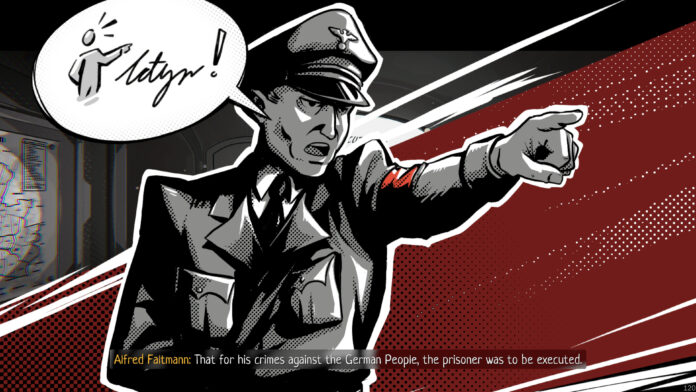With The Darkest Files, Berlin-based indie studio Paintbucket Games has crafted a gripping, meticulously researched narrative game that delves into the legal and moral aftermath of World War II. It’s a game about memory, justice and the courage to stand against collective denial. For co-founders Jörg Friedrich (Game Director) and Sebastian Schulz (Art Director), it was immediately clear: “This story deserves to be told and we saw an opportunity to bring it to audiences who might never encounter it otherwise.”
“Our first game, Through the Darkest of Times, ends with the end of World War II,” Friedrich explains. “We found ourselves wondering what happened next. What happened to the perpetrators and the persecuted once the war was over? They didn’t all just vanish.” That curiosity led them to the story of Fritz Bauer, the Attorney General in Frankfurt during the 1950s, who spearheaded efforts to bring Nazi criminals to justice. “Bauer was this incredible figure who, against massive societal resistance, fought to bring Nazi criminals to justice when most of Germany just wanted to move on and forget,” says Friedrich. “His story deserves to be told.”
Paintbucket Games has always been more than just an indie studio. It’s a mission-driven company built around stories that matter. “The name Paintbucket actually comes from a key piece of art from our first game,” Schulz shares. “Resistance fighters painting anti-Hitler slogans on a wall. There was this paint bucket in the corner. We thought it would make a cool logo and somehow represents our mission: to make games that leave an impact. We want our games to add something meaningful to the medium and hopefully to players’ perspectives.”
Games that matter
Their work is rooted in humanitarian values and historical accuracy. “We see ourselves as developers of ‘games that matter’,” Friedrich says. “Games can be powerful vehicles for important social and historical messages. When players experience these stories through gameplay, the lessons about justice, courage and standing up against systemic wrongdoing become more personal and memorable than they might through other media.” In The Darkest Files, players step into the shoes of Esther Katz, a fictional young prosecutor inspired by Bauer’s real-life colleagues. “You’re not just reading history, you’re living the decisions, experiencing the pressure and wrestling with the consequences,” says Friedrich.
That immersive realism is backed by a deep commitment to research. “Our main source was a Dutch archive that holds all murder trials for Nazi-era crimes tried after the war,” Friedrich explains. “We had access to actual court proceedings, witness testimonies and legal arguments. That formed the backbone of the cases in the game.”
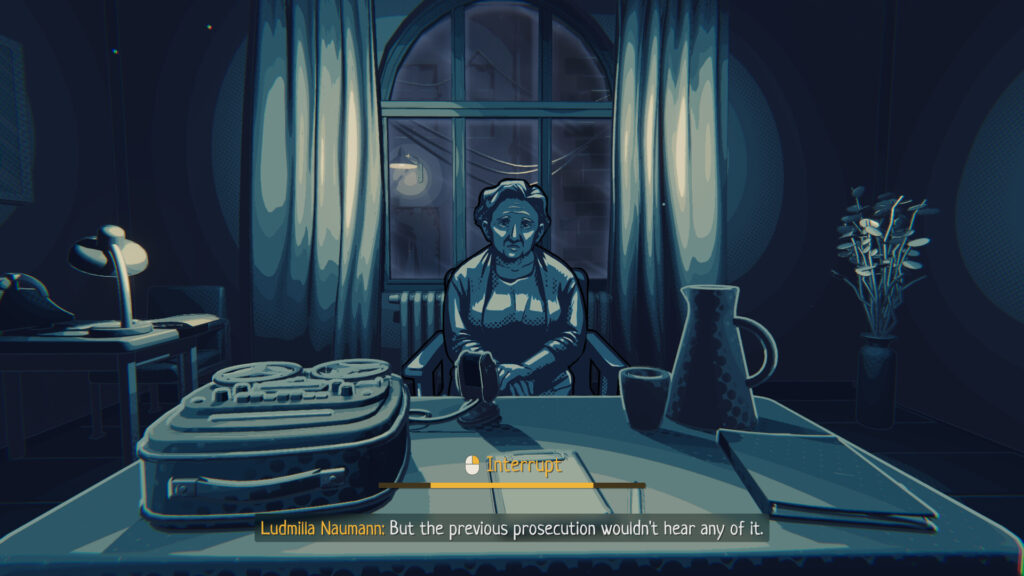
But it didn’t stop there. “We visited memorial sites, talked to historians and even consulted with a lawyer to make sure our courtroom scenes held up,” Schulz adds. Of course, it’s still a game, so the team had to strike a balance between realism and playability. “To be honest, that’s probably the least realistic part of the game. But we were committed to getting the details right while still creating an engaging experience. The cases in the game are carefully researched and based on actual investigations of that era.”
Nazi crimes
That balance is perhaps most evident in the game’s standout features. “One of the things I love most is how we dive into witness memories,” Friedrich says. “You get to move through slightly different versions of events, depending on the witness’s perspective. It’s more than dialogue, it’s investigation through lived experience.” Another innovation is the blueprint mechanic. “Multiple-choice answers tend to give the solution away, so instead we let players construct their own theory of what happened based on all the evidence they’ve gathered,” Schulz explains. “Both mechanics allow players to engage with the historical material in a way that feels authentic to the work that Bauer and his team were doing, while still being compelling as a game.”
Behind the evocative gameplay lies a visual style that’s just as deliberate. “We knew we needed a very distinct look that is highly recognizable. As a small indie studio, having a strong visual identity is super important branding for us,” says Schulz. “At the same time, it needed to be something that we could pull off with a relatively small team, something appropriate to the dark and serious subject matter and something that fits the time period and mood.”
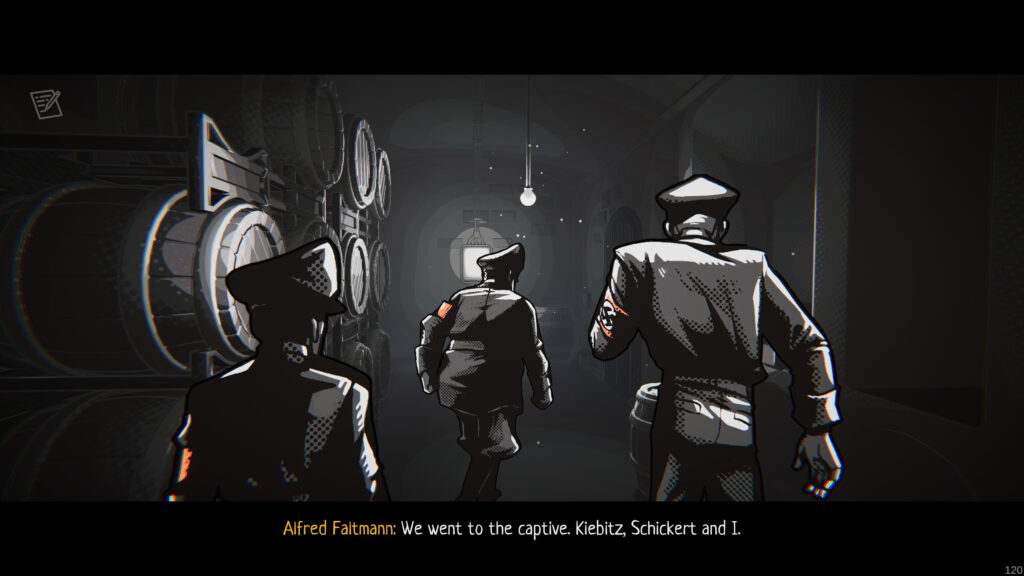
All these considerations led to the characteristic 1950s noir comic book aesthetics that mixes cell-shaded 3D environments with 2D hand-drawn characters and comic panels. “We didn’t want to create photorealistic depictions of Nazi crimes, but we also didn’t want to trivialize them. The stylized approach allows us to depict these events in a way that’s impactful without being gratuitous.”
Preserving the mystery
But developing a detective game, especially one rooted in real events, came with major challenges. “The hardest part? Balancing difficulty,” Friedrich admits. “Once a player solves a case, they can’t test it again. And as developers, we already know the answers. So how do you know if your clues are too obvious or too vague?”
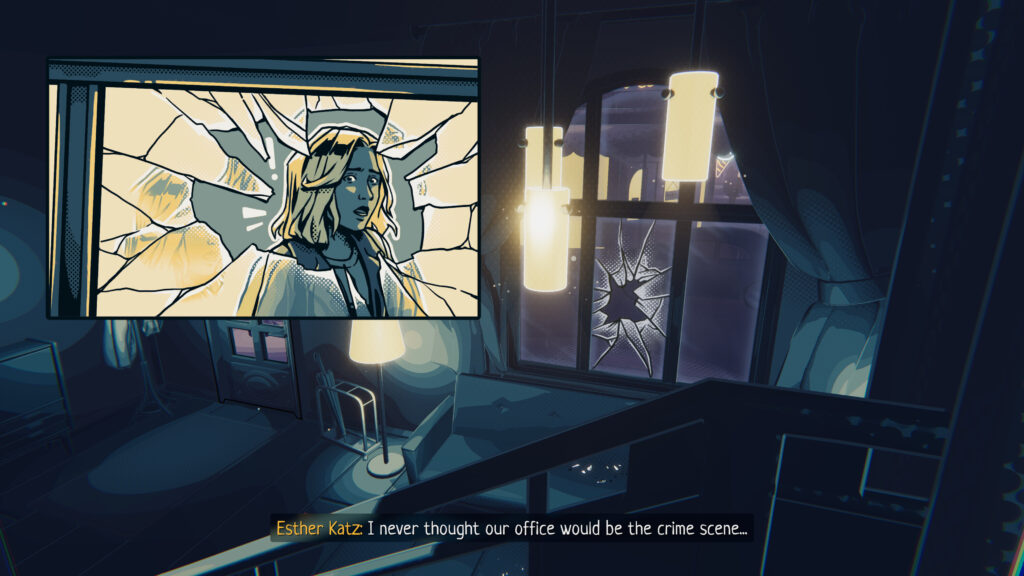
Their solution was as creative as it was effective: a closed beta with dedicated Kickstarter-backers. “As part of our crowdfunding campaign for the game, we looked for volunteers to join a closed beta test,” Friedrich explains. “They played the game and gave us feedback, but promised to keep everything they saw a secret. This approach gave us the best of both worlds: we got real player feedback on our investigation mechanics and story pacing, while still preserving the mystery for the wider audience.”
Self funded and published
Funding the project also proved more difficult than expected. “We’ve always had publishers before, but in 2022 the industry was just sliding into a crisis,” Friedrich says. “We made the decision to publish and finance it ourselves. So we had to finance it with a mixture of our own funds. We did a lot of work for hire on the side and had public funding and crowdfunding. That’s why it took longer than planned.”
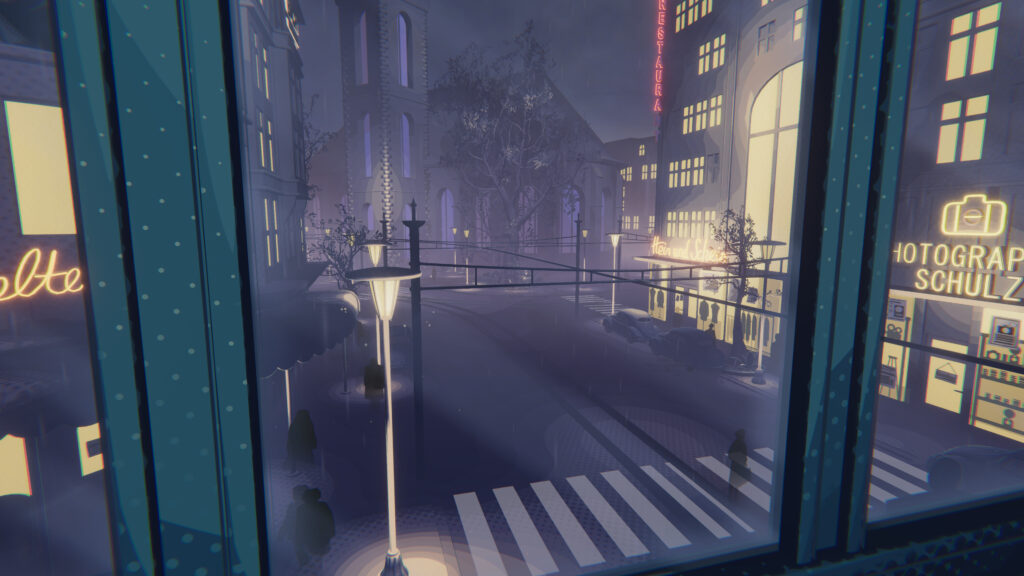
Marketing The Darkest Files also took a grassroots turn. “We were at Gamescom, ran Kickstarter campaigns and left Twitter for Bluesky,” Schulz says. “We also focus heavily on community-building through Discord, newsletters and email.” The result? A loyal, engaged player base and broad critical acclaim. “We were featured in SPIEGEL, ZEIT and even on German public TV, which is a big deal in Germany,” Schulz adds.
Meaningful stories
Ultimately, The Darkest Files is more than just a history game. It’s a game that offers a haunting reflection of contemporary politics as well. “We didn’t set out to make a game that feels topical,” Friedrich says. “For example, the first case in our game is about a family father who gets kidnapped illegally by the authorities, who then don’t want to admit that they did something wrong. Sounds familiar?”
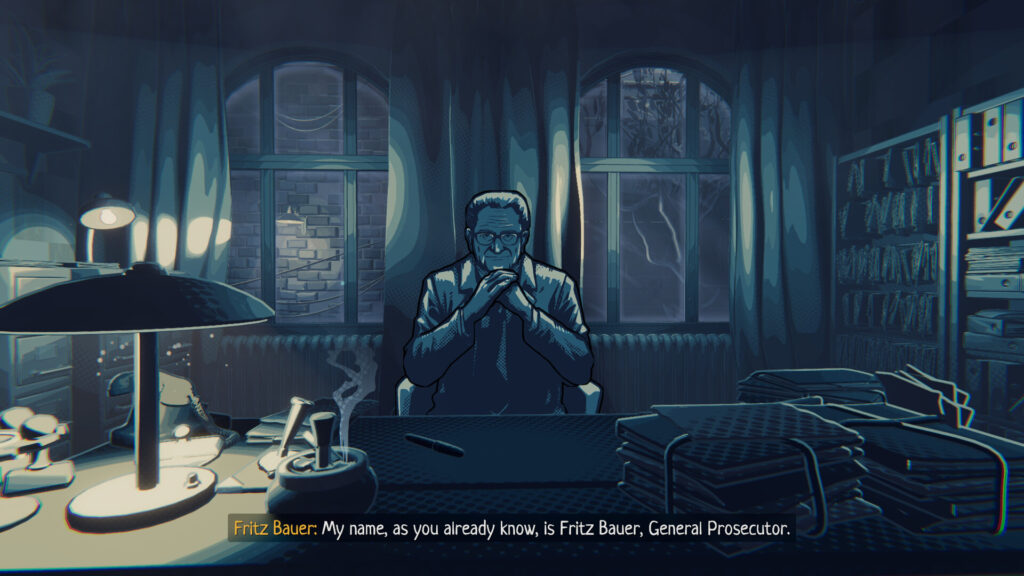
And in a world where historical memory is increasingly politicised, games like The Darkest Files offer a vital, interactive way to understand the past and learn from it. “We found that players are actually hungry for meaningful stories that deal with complex moral issues, if you present them in a thoughtful way.”
Play The Darkest Files now on Steam

